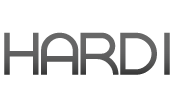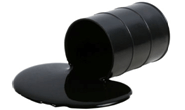
Nucor posts $830/ton spot HR price for week of April 8
Nucor said its spot hot-rolled (HR) coil price this week will be $830 per short ton (st).

Nucor said its spot hot-rolled (HR) coil price this week will be $830 per short ton (st).

Personal Consumption Expenditures (PCE) inflation data was released on Friday, March 29, despite the stock market being closed for Good Friday. The year-over-year (y/y) PCE price index rose 2.5% in February, in line with market expectations but up from the 2.4% growth seen in January. The core PCE index, which excludes food and energy prices, rose 2.8% y/y in February, also in line with expectations and slightly down from 2.9% in January.

The number of active rigs in the US eased to a nine-week low, while Canadian activity continued it’s seasonal wind down.

Sheet prices continue to inch higher. That’s a welcome development for many. But it’s also a far cry from the price surge many predicted about a month ago. Remember the theory that supported a spring surge: Sheet prices would soar on a combination of mill outages, stable-to-strong demand, restocking, mill price increases, and (potentially) trade action against Mexico as well.

Nucor plans to publish a weekly spot price for hot-rolled (HR) coil beginning on Monday, April 8, according to a press release and letters to customers. The Charlotte, N.C.-based steelmaker said its published HR price would be derived from “both quantitative and qualitative data” in the letter to customers on Thursday, April 4.

Steel shipments from US mills were lower in February, both from January and from last year.

Sheet prices moved higher this week for the second consecutive week, while plate prices ticked lower, according to our latest canvas of the steel market.

Nucor has acquired Southwest Data Products (SWDP), a manufacturer and installer of data center infrastructure, for $115 million.

Nucor intends to keep plate prices unchanged with the open of its May order book, according to a letter to customers dated Thursday, March 28. The Charlotte, N.C.-based steelmaker said the announcement would be effective with new orders received on Friday, March 29.

SMU latest' steel market survey paints the picture of sheet market that has hit bottom and begun to rebound. Lead times are extending again after stabilizing earlier this month. Mills are far less willing to negotiate lower sheet prices - even if there are still deals to be had on plate, according to the steel buyers we canvassed.

After stabilizing in our last check of the market, production times for flat-rolled steel have begun to push out further, according to steel buyers responding to SMU's market survey this week.

Steel buyers report that mills are less willing to talk price on new sheet orders than they were in weeks past, according to our most recent survey data. In contrast, mills’ willingness to negotiate on plate products remains relatively high, now at the second-highest rate of the year.

Oil and gas drilling activity in North America slowed this week, according to the latest figures from Baker Hughes.

The Biden administration this week announced landmark industrial funding to support potentially transformational industrial decarbonization projects. In total, thirty-three projects across eight industrial sectors will receive up to $6 billion in federal funds from the US Department of Energy’s (DOE) Office of Clean Energy Demonstrations (OCED).

I can’t really define “Bidenomics” because it is so filled with contradictions. It seems to aim to increase manufacturing output in the United States. But not all increases are created equal.

Galvanized buyers reported solid demand and balanced inventories this week and were anticipating the sheet price increase announced by Cleveland-Cliffs on Wednesday.

Cleveland-Cliffs aims to increase sheet prices by $60 per short ton (st) and is seeking a new target base for hot-rolled coil (HRC) of $900/st. That's according to a press release circulated on Wednesday morning, March 27.

SMU’s sheet prices firmed up modestly this week, even as CME hot rolled futures declined. What gives? My channel checks suggest that demand remains stable and that buyers have returned to the market following new HR base prices announced by mills earlier this month. I’m looking forward to seeing whether lead times, which have stabilized, will start extending. SMU will have more to share on that front when we release updated lead time figures on Thursday. As for HR futures, what a reversal! As David Feldstein wrote last Thursday, bulls expected mill price increase announcements. And we briefly saw the May contract climb as high as ~$1,000 per short ton (st).

Sheet prices reversed course and moved higher this week, while plate priced remained flat, according to our latest canvas of the market.

North American rig count activity declined this week, according to the latest data from Baker Hughes. The number of active rigs in the US eased from last week’s 6-month high, while Canadian activity continued to wind down.

APAC steel prices are likely to bottom out in the near term as seasonally higher demand coupled with production cuts may support prices. In the EU, prices are likely to remain under pressure, while fresh price increases are expected in the US. APAC steel prices are likely to bottom out in the near term In […]

I’ve had questions from some of you lately about how we should think of the spread between hot-rolled (HR) coil prices and those for cold-rolled (CR) and coated product. Let’s assume that mills are intent on holding the line at least at $800 per short ton (st) for HR. The norm for HR-CR/coated spreads had been about $200 per short ton (st). That would suggest CR and coated base prices should be ~$1,000/st. Good luck finding anyone offering that.

SMU’s price for hot-rolled (HR) inched lower this week. I wouldn’t be surprised, however, if we start to see prices and lead times move higher in the weeks ahead. The modest declines in HR this week are probably the result of lingering deals cut at “old” prices, as sometimes happens after mill price increases. But those deals will probably be out of the market soon if they aren’t already. So why do I float the idea of higher prices? Some big buys have been placed. It reminds me a little of what we saw last fall, when people restocked in anticipation of higher prices once the UAW strike was resolved.
Sheet and plate prices mostly moved lower this week after little change was noted the week prior. Despite edging down, sentiment is mixed, and many suggest a bottom may be near.

U.S. Steel expects higher earnings in the first quarter of this year vs. the previous quarter.

Are we still looking for a bottom on sheet prices? In what direction are steel and scrap prices headed? How’s demand holding up at the moment?

Happy St. Patrick’s Day. “To govern is to choose.” Those words, reportedly first uttered by the late French Premier Pierre Mendes-France in the 1950s, resonate vividly in our time. It means that choices have consequences and that priorities must be set based on goals. Interested parties, in and out of government, raise their voices in […]

Rig counts in the US and Canada were mixed this week, according to the latest data from Baker Hughes.

The CRUspi fell by 8.3% month over month (m/m) in March to 206.6 as weaker-than-expected demand weighed on markets around the world. Price falls were notable across all regions, with elevated inventory levels pushing prices in the US and Europe, and disappointing stimulus measures from the Chinese government weighing on those in Asia.

Steel Market Update’s Steel Demand Index recovered out of contraction territory on the heels of the pricing blitz from mills last week, according to our latest survey data.